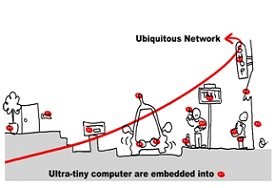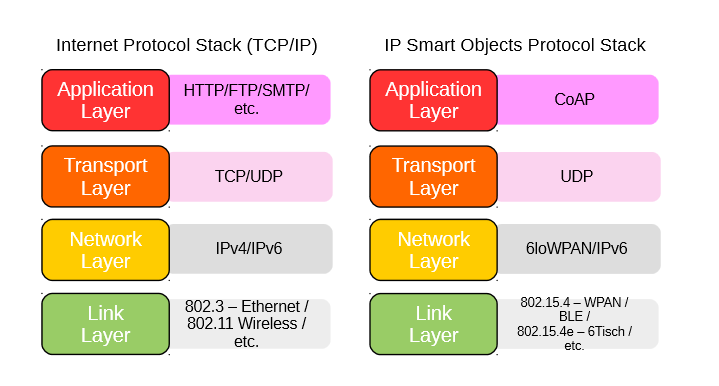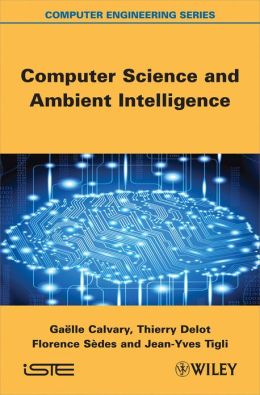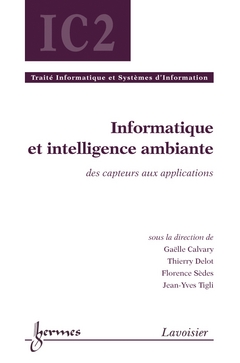Ceci est une ancienne révision du document !
Middleware for Internet of Things


« More than the sum of its devices, the Internet of Things links technologies together to create new services and opportunities. »
Lectures and Personnal Works
Lecture 1 : Introduction to Architecture and Middleware for Internet of Things
- Lecturer : J.-Y. Tigli
- Author : J.-Y. Tigli
Middleware for Internet of Things, a survey on the interoperability challenge and communications patterns
Materials :
Lecture 2 : Network Infrastructure for IoT : ex. LPWA (Low Power Wide Area) networks
- Lecturer : L. Gomez, SAP Research (canceled)
- Prerequisites : c and c++ programming, python programming
Low Powered Network for the Internet of Things
Low Power Network for the internet of Things
Tutorial LoRa: Use LoRa network with the SAP Hana Cloud
Source Code .c, .cpp and .py for tutorial
Other references
Low Power Wide Area Networks: An Overview , Usman Raza, Parag Kulkarni, and Mahesh Sooriyabandara, Toshiba Research Europe Limited, UK,Cornell University online Library, arXiv.org pdf
Lecture 3 : Event Driven Architecture and Middleware for IoT Practical
- Lecturer: J.Y. Tigli and G. Rocher
- Requirements : shell and C# programming (can be replace by C programming), windows PC with Visual Studio and Vmplayer with a linux virtual machine.
IoT : MQTT - OASIS standard / Tutorial MQTT
Event based Middleware and CEP : MQTT tutorial
For more details about MQTT messages format and protocol, see :
MQTT Version 3.1.1 OASIS Standar 29 October 2014
Other materials :
Lecture 4 : CEP (complex event processing) in Event Driven Architecture
Model checking and formal approach for CEP
- Lecturers : I. Sarray & A. Ressouche
- Prerequisites : c programming, notions of logic and automata theory
Lecture: Synchronous language for formal validation - application to CEP (complex event processing) Slides
Tutorial: Creating a Validated CEP node in a MQTT approach Text
Material:
- CLEM: the clem tools useful to design a synchronous road information component Clem software. This archive contains clem, blif_simul and galaxy software both for linux 64 bits and for linux 32 bits. You should put them in a “bin” folder and add the path to this folder in the environment variable PATH of your linux system.
- VERIFICATION: The Clem verification tools must be installed from xeve.tgz and NuSMV-2.6.0.tgz archives (see the tutorial for both xeve and NuSMV installation). You should also add the xeve and the NuSMV software to your “bin” folder. Moreover, a NuSMV executable file is in the archive to be used if it is running in your linux system.
- C CODE: Some C files to help the definition of the MQTT client which contains the CEP validated node defined in your tutorial.
Notice: It is mandatory to have Linux operating system.
Lecture 5 : Service oriented Archtecture and Middleware for IoT : towards Web of Things (WoT) and Web Services for Devices (WSD)
From IoT to WoT/WSD - Tutorial HTTP/CoAP - WS/REST - WSD
Service oriented Middleware and IoT
Tutorial on HTTP RESTFul and CoAP
- Other References :
Zip file of a .Net C# solution with a simple CoAP client and server based on CoAP.Net library
A Perspective on the Future of Middleware-based Software Engineering, Valérie Issarny, Mauro Caporuscio, Nikolaos Georgantas, Workshop on the Future of Software Engineering : FOSE 2007, 2007, Minneapolis, United States. pp.244-258, 2007, pdf file
Lecture 6 : WoT and WSD (Web Service for Device) middleware and software composition - tutorial Ubiquaria
Lecturers : S. Lavirotte & J.Y. Tigli
Lecture 7 : Advanced MIT : SWoT (Semantic Web of Things), middleware and semantic composition (G. Rocher)
Lecturer : G. Rocher, GFI Informatique
Lecture 8 : Test and Review of students Papers
Review of students Papers before last version one Week after (DEADLINE).
Evaluation Calendar
- Tutorial on Synchronous Language and CEP (depends on lecturers, no before 25/02)
- Final Evaluation : Exam Paper (Tuesday 27 Feb)
- Without document
- MCQ and open questions on all the courses of the module
- Student Paper : (Sunday, 4 March)
Evaluation Rules :
- Evaluation of a Practical Course : Evaluation from the Tutorial of the Modeled Complex Event Processes using Synchronous languages approaches and model checking
- During Lecture 30/1/18 * : one or more MCQ about all the courses and tutorials before
- Other Evaluation during lecture 20/02/18 : MCQ about all the courses and tutorials before.
- Personnal Work : Writing of a short survey paper about a technological or research topic in the field of IoT
(*) optionnal
Personnal Work : Write your own paper
Course Agenda :
Main Conferences and Journals
Other References
Books
[2013] Gaëlle Calvary, Thierry Delot, Florence Sèdes, Jean-Yves Tigli, editors. “Computer Science and Ambient Intelligence” 335 pages, ISTE Ltd and Wiley & Sons Inc, March 2013, ISBN 978-1-84821-437-8
[2012] Gaëlle Calvary, Thierry Delot, Florence Sèdes, Jean-Yves Tigli. “Informatique et Intelligence Ambiante : des Capteurs aux Applications (Traité Informatique et Systèmes d'Information, IC2)” Hermes Science, July 2012, ISBN 2-7462-2981-1
Videos
Illustrations of Service Continuity Challenge in Ambient Systems
For Mobility : AmbientComp Project, AmbientComp Project For Internet of Things : UbiFlood Project (Research Cooperation Programme with Asia), UbiFlood Project
Illustrations of UbiComp Middleware to facilitate Service Continuity Design in Ambient Systems
For Mobility : Continuum Project (National Research Agency), Continuum Project Videos



